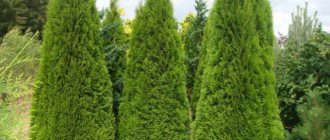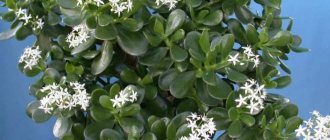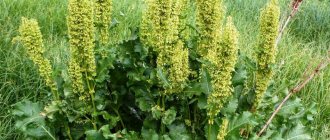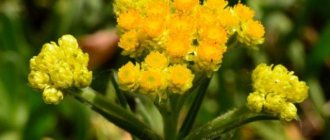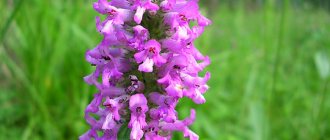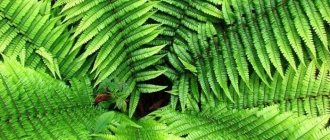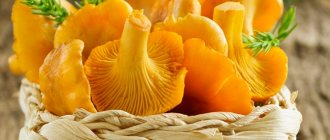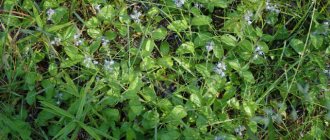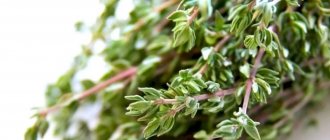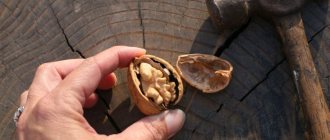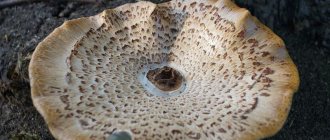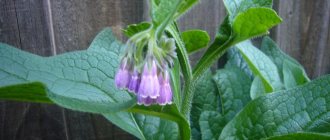Siberian fir is a representative of the fir genus, belongs to the pine family (Pinaceae), an evergreen coniferous tree, looks very similar to spruce, but unlike the latter, fir has non-prickly needles.
The scope of application of the plant is very wide. It is used in the woodworking industry, construction, shipbuilding and optics. Also, due to its wide range of effects on the body, fir has great health benefits. Official and traditional medicine uses fir for the treatment and prevention of a number of diseases, ranging from flu and colds to tuberculosis and cancer.
Turpentine, alcohol, camphor, and essential oil are produced from various parts of the plant. Traditional medicine uses all parts of the plant, which are a natural storehouse of a large number of useful components.
The properties of fir oil are used in the perfume and cosmetics industry in the production of perfumes, colognes, lotions, shampoos, deodorants, air fresheners, as well as in soap making.
In addition, Siberian fir is a beautiful ornamental plant and is used for landscaping parks and squares and in landscape design. Unlike other conifers, the plant tolerates pruning well and is used in creating picturesque hedges.
Types and varieties of fir
The fir genus includes 50 species. The most widespread:
- Korean fir, varieties: Silberlock, Diamond, etc.;
- balsam fir, varieties Nana, Piccolo, Columnaris, Argenta, Glauka, Variegata, etc.;
- Caucasian fir (Nordmann);
- Fraser fir, variety Prostrata, etc.;
- single-color fir (concolor), varieties: Violacia, Argentea, Aurea, Compacta Glauka, etc.;
- white fir (European, comb),
- white fir (bud scale),
- whole-leaved fir (black);
- Siberian fir, varieties Glauka, Variegata, Elegance, etc.
The most common species in Russia is Siberian fir (Ábies sibírica), which is of commercial importance.
Botanical description
Fir is an evergreen coniferous tree or shrub. Height – 30-60, up to 100 m, diameter – 0.5-2 m. The rhizome is mainly taproot, located not deep (up to 2 m) from the soil surface.
The trunk is cylindrical at the top, ribbed at the bottom. The crown is pyramidal with a pointed apex, can be translucent or dense, narrow or spreading.
The branches are arranged in a ring shape almost perpendicular to the trunk or ascending. Free-growing trees descend almost to the ground. The bark is smooth and thin, becoming covered with deep vertical cracks with age. Color: dark gray, grayish brown. It is covered with thickenings, inside of which there is resin (resin).
Needles, spikelets with pollen and cones are located on young shoots. The needles are flat, shiny, not too hard, not prickly, fragrant, covered with a waxy coating. The edges are solid. On the underside of the needles there are two white stripes. Like spruce, the needles grow separately from each other, densely adjacent to one another. The length of fir needles is up to 3 cm. Color is dark green, bluish-silver.
Fir is a monoecious plant: male (spikelets with pollen) and female (cones) fruiting organs simultaneously develop on one plant. Fir blooms in May.
Spikelets with pollen grow in groups. Color: straw yellow, reddish. Pollen grains have two air sacs, which facilitates their transport over vast distances.
The cones are cylindrical or ovoid, located vertically on the branches. In the axils of the scales there are seeds that ripen in September-October, while the scales fall off and the winged seeds scatter, leaving a rod on the branch. The color of the cones at the beginning is dark purple, pinkish-violet, and by the time the seeds ripen they become light brown. Length: 7-9 cm.
Fir reproduces by seeds, as well as by rooting lower branches. Seed production begins at 60-70 years of age, in open areas - at 30 years of age. Life expectancy is 200-300, sometimes up to 400 years.
Growing at home
Despite the fact that fir is very unpretentious in nature, growing a tree at home requires creating the right microclimate and maintaining certain care. An indoor tree will not grow as large as a fir in its natural environment; the maximum height of the plant will hardly exceed one and a half meters.
Coniferous plants are propagated by seeds or cuttings. Planting seeds is used only for breeding species trees; cuttings are used to grow ornamental varieties. The seeds are collected in the fall in the fir forest and stored until spring in a mixture of river sand and peat at a temperature of one to five degrees; it is optimal to store the seeds in the lower compartments of the refrigerator. If the material has not been cold-treated, it must be soaked in warm water for 48 hours before planting. Regardless of the preparation method, before planting in the ground it is necessary to keep them in a solution of potassium permanganate for about 20 minutes. Without preliminary preparation, seeds may not sprout for one to three years.
In the second cultivation method, cuttings with growth buds are cut in the spring from the apical annual shoots, with the branches pointing upward. This will allow you to get a beautiful and slender tree in the future. The roots take root already in the first year of growth, but a full-fledged root system develops only in the second year.
The breed grows well in well-drained, loose, moist soils saturated with nutrients. It is optimal to purchase a special mix for coniferous plants. When independently compiling a soil mixture for tree growth, it is recommended to choose peat, loam and river sand, where you must add fallen pine or spruce needles to ensure that the soil contains the necessary microorganisms.
Collection and preparation
For medicinal purposes, buds, cones, needles, young branches (spruce branches), bark, and resin are harvested:
- buds - early spring - late March-early April;
- cones - in early spring;
- branches - in late spring-early summer,
- bark - at any time, but best in early spring, at this time the content of medicinal substances in it is maximum;
- pine needles - twice a year: at the end of spring and at the end of autumn-beginning of winter, when the maximum amount of useful substances accumulates in it;
- resin - throughout the warm season, at temperatures above 16°C.
For fir treatment, all parts of the plant, with the exception of the bark, are best used fresh. The amount of nutrients in the bark increases when dried.
The raw materials are dried in the shade, spread out in a thin layer, with good air ventilation, not forgetting to periodically turn them over. Store in boxes or bags made of natural material in a dry, dark place with good air ventilation.
Growing and caring for the plant
To plant Siberian fir, choose shaded areas with loamy, moist, well-drained soil. Seedlings three to four years old take root well.
Two weeks before planting, prepare a hole measuring about 60 x 60 cm and a depth of 60 cm. The hole is moistened with 30 liters of water, after absorption of which the bottom of the hole is loosened, crushed stone or broken brick is added in a layer of 5-7 cm. The hole is filled to a height of 0.3 m with this mixture:
- 1 part peat;
- 3 parts clay;
- 1 part sand;
- 3 parts humus;
- 0.2-0.3 kg nitrophoska;
- 10 kg sawdust.
After two weeks, the seedling is planted: lowered into the hole, straightened out the roots and covered with a mixture of the same composition that was used to fill the bottom. The soil is thoroughly compacted and watered. The tree does not need watering, but in the 2nd year after planting it must be fertilized (apply 150 g of kemira to the tree trunk in the spring).
Siberian fir has long been used in folk medicine due to the uniqueness of its composition, wide spectrum of action and low cost of raw materials. And, most likely, many of you have at least once used drugs or folk remedies to get rid of various ailments.
You can add to our list of traditional medicine recipes in the comments. And also report possible side effects encountered as a result of treatment using this plant, or share successful relief from ailments.
Chemical composition
The benefits of fir in the treatment of many diseases are determined by the components in its composition. All parts of the plant contain essential oil: needles - 1.5-3.5%, wood - up to 4.2%, roots - 8%, resin (fir balsam) - 30%. Under industrial conditions, essential oil is obtained from young branches and cones, which serves for the semi-synthesis of medicinal camphor.
Fir essential oil consists of half bornyl acetate. It also contains camphene (10-20%), α-pinene (8-12%), α-phellandrene, borneol, dipentene, abolene, santhene, campherene, acetylaldehyde, etc.
Fir needles are a rich source of vitamin C - 200-900 mg%, the maximum amount of which accumulates in April. In addition, vitamin E, carotene, proteins, carbohydrates, phytoncides, flavonoids, microelements - iron, manganese, cobalt, zinc, copper, etc. were found in the needles.
Fir seeds contain vitamin E and up to 30% fatty acids, such as oleic, lauric, kairinic, etc. Up to 13% of tannins are found in the bark.
Application of fir oil
Over a long period of use, this remedy has proven its effectiveness in treating many medical problems. Its properties are as follows: expectorant, antiseptic, stimulating, healing, deodorizing, tonic.
“Siberian Doctor” can positively influence the treatment of such diseases:
- Viral and bronchopulmonary: bronchitis, pneumonia, acute respiratory infections, influenza, colds;
- ENT: sore throat, otitis media, tonsillitis, rhinitis, sinusitis;
- Dermatological: eczema, cuts, wounds, burns, diathesis in children, boils, herpes;
- Dentistry: toothache, periodontal disease, stomatitis, gingivitis;
- Musculoskeletal system: bruises, fractures, radiculitis, sciatica, myositis, plexitis, arthritis;
- Neurology: improves sleep, calms, relaxes;
- Urology: kidney stones, adenoma, diseases of the genitourinary tract;
- Gastrointestinal diseases: colitis, enterocolitis.
Fir oil has also found its use in cosmetology: it smoothes the skin, rejuvenates it, removes wrinkles and sagging. It especially helps with oily and problematic skin, as it has a pronounced anti-inflammatory effect.
Due to the presence of natural phytoncides in this product, during outbreaks of viral diseases transmitted by airborne droplets, it is used as a preventive bactericidal agent.
Useful and medicinal properties of fir
The medicinal and beneficial properties of Siberian fir are as follows:
- neuroprotective,
- antiseptic,
- bactericidal,
- antiviral,
- expectorant
- diuretic,
- painkiller,
- anti-inflammatory,
- wound healing,
- antifungal,
- tonic,
- restorative,
- immunomodulatory, etc.
Fir phytoncides cleanse the air of microbes and have a refreshing effect.
Fir oil has the following beneficial properties:
- bactericidal,
- antiseptic,
- sedative,
- antitumor,
- anti-inflammatory,
- painkiller,
- tonic,
- restorative, etc.
Strengthening the immune system
Fir also contains substances that strengthen and improve immunity. Fir needles are especially rich in vitamins, antioxidants and other components beneficial to the body.
To improve your immune system, you can make the following cocktail: pour about five tablespoons of fresh pine needles into two glasses of hot water overnight, and in the morning, strain and drink throughout the day, a couple of sips at a time.
In spring, immunity also decreases due to a lack of vitamins. A decoction prepared according to the following recipe will help cope with vitamin deficiency. Pour two tablespoons of dry fir needles with a glass of boiling water. Steam in a water bath for about 20 minutes. Then leave to infuse for about an hour. Take during the day after meals, dividing the contents into three parts. This drink will saturate the body with vitamins and increase resistance to various viral strains.
If you do not like the specific taste of fir decoction, then you can try making an aromatic mixture to boost immunity. To do this you will need:
- fir oil;
- rosemary oil;
- geranium oil;
To the base (the base can be any vegetable oil you like, flaxseed or corn are often used), add two drops of fir oil, one drop of rosemary oil and one drop of geranium. The resulting mixture can be used for massage, as well as for aromatherapy. An aromatherapy session should last about 20 minutes.
Siberian fir. Therapeutic effects on the body
A large number of people, freely using plants to treat various diseases, believe that they are absolutely harmless. However, among medicinal plants there are potent, toxic and even poisonous ones. In addition, many people, especially older people, have several chronic diseases.
Therefore, in order for the treatment to be effective, when using it, one should take into account the benefits of fir and the harm that it can cause if used incorrectly, and this can only be done by a doctor. Based on this, before you start taking medications based on it, consult a doctor, or better yet, a herbalist you trust. The information given below is for informational purposes only.
Cardiovascular diseases
Both official and traditional medicine uses the medicinal and beneficial properties of fir to treat a number of cardiovascular diseases. Plant preparations stimulate cardiac activity and are indicated for acute and chronic heart failure. Most often, a decoction (infusion) of pine needles and essential oil are used for these purposes.
Also, the benefits of fir oil are manifested in its ability to regulate blood pressure: it reduces high blood pressure, and evens out low blood pressure, without affecting normal blood pressure.
A decoction (infusion) of young fir tips is taken for high blood cholesterol and atherosclerosis.
Tincture, as well as a decoction of the plant bark, help with noise in the head, headaches, and migraines.
Colds and bronchopulmonary diseases
It is difficult to overestimate the benefits of Siberian fir for treating the respiratory system. Fir is used as a medicine, from the prevention of seasonal colds to the treatment of chronic bronchitis, pneumonia and tuberculosis.
Fir preparations relieve swelling and inflammation, act as an analgesic, have a diaphoretic effect, facilitate the discharge of sputum, and have an antibacterial and antiviral effect. All parts of the plant are used for these purposes.
A decoction (infusion) of pine needles is a good gargle. Also, a decoction (infusion) of pine needles and fir cones can be used for inhalation, which also helps relieve bronchospasm. Fir baths have a good effect.
The properties of fir oil are widely used for these diseases. The oil in its pure form is applied to the tonsils with a pipette or cotton swab for sore throats. For a runny nose, rub a few drops along the bridge of the nose. It is used for rubbing the subzygomatic and collar areas, bronchi, lungs, feet, followed by insulation - it has a diaphoretic and warming effect. Oil is a recognized component for inhalations.
Gastrointestinal diseases
The beneficial and medicinal properties of fir have been used for various gastrointestinal diseases. A decoction (infusion) of pine needles, cones, as well as fir oil - fir water, improves the functioning of the gastrointestinal tract, regulates the acidity level of gastric juice, relieves inflammation of the stomach (gastritis), small and large intestines. A decoction of young fir shoots is recommended for intestinal colic and diarrhea.
Bladder and kidney diseases
The healing and beneficial properties of fir needles have proven themselves well for the treatment of inflammatory diseases of the bladder, such as cystitis, and kidneys. Young cones of the plant are also used for these purposes. Taking essential oil internally (fir water) stimulates the adrenal glands.
For the nervous system
The properties of fir have a beneficial effect on the nervous system. Plant preparations have a relaxing and calming effect. Based on this, both official and traditional medicine recommends their use for depression, neuroses, increased nervous excitability, stress, insomnia, etc.
For this purpose, plant preparations are used both internally and externally, including in the form of baths, which also help with neuralgia.
For cancer
Official medicine uses fir in complex therapy against cancer. The most effective in this regard are a decoction (infusion) of young shoots, as well as essential oil, which is also indicated for leukemia.
Skin diseases
The use of fir (needles, cones, bark) has proven effective for the treatment of a number of skin diseases, such as eczema, psoriasis, dermatitis, diathesis, acne, boils, nail fungus, etc.
For these purposes, the benefits of fir essential oil are also used, both in pure form and as part of ointments that can be prepared at home. An alternative to essential oil is oil infused from the plant's needles.
Fir baths, as well as bath procedures with a fir broom, are of great benefit for skin diseases.
Wounds, cuts, burns
The properties of fir (needles, buds, cones) have been widely used for various damage to the skin, such as: wounds, including purulent and non-healing wounds, trophic ulcers, scratches, cuts, burns, frostbite, diaper rash, bedsores, etc.
Plant preparations stimulate local lymph and blood circulation, accelerate regeneration processes, promoting rapid healing. In addition, the plant has antiseptic properties, prevents infection, and has an analgesic effect.
For these purposes, an infusion (decoction) of pine needles, extract, resin, oil in the form of ointments, compresses, rinses, etc. are used.
Joint diseases
Both official and traditional medicine widely use fir preparations for joints. For these purposes, a tincture of pine needles, buds or young cones is most often used, as well as essential oil, which can be replaced with homemade oil.
Rubbing and compresses are recommended for the treatment and relief of osteochondrosis, radiculitis, myositis, rheumatism, arthritis, gout, diseases of the leg joints, muscle pain, etc. Camphor preparations - oil, alcohol, ointment, which can be bought at the pharmacy, also have a good effect for these procedures.
The use of fir needles in the form of steam heating, baths, and sauna procedures has a good effect on these diseases.
Use of fir in medicine
Camphor is used as a mild analeptic to stimulate respiration and blood circulation in cases of pneumonia, bronchitis, bronchospasm, for the prevention of postoperative pneumonia, in patients who have been on bed rest for a long time, for strokes, infectious diseases, for poisoning with narcotic and sleeping pills or carbon monoxide.
Previously, the ability of camphor to cause convulsions was used in psychiatric practice to treat schizophrenia. In folk medicine, infusion and decoction of pine needles and buds are used as an antiscorbutic, diuretic and analgesic for colds and rheumatic pain.
A decoction of young pine needles is drunk as a diuretic and disinfectant for kidney and bladder diseases. Turpentine is used as an external irritant, and resins are used as a wound-healing agent. Fir cones are a good remedy for rheumatism and other colds in the joints of the legs. For this purpose, they poured boiling water over the cones and steamed the legs, covering them on top with a tarpaulin or other dense material.
Dosage forms
Decoction of pine needles
2 tbsp. Rinse the chopped dry or fresh fir needles well and add 250 ml. water, bring to a boil and simmer over low heat for 20 minutes. Remove from heat, cover with a lid, insulate and leave until cool. Strain. Using boiled water, bring the resulting broth to its original volume.
This is a daily dosage, which is divided into 2-3 doses.
Fir infusion (fresh pine needles)
Wash the fir needles well and grind them using a meat grinder or blender. 1 tbsp. pour 200 ml of mass. warm water. Cover with a lid and leave for 3 hours in a dark place. Stir, strain, squeeze out the raw materials using gauze.
Take 40-50 ml. 3-4 times a day half an hour after meals
Oil
An alternative to essential oil is oil infused with fresh pine needles and buds. The benefits of fir oil prepared in this way are lower than those from the pharmacy. It is used for various skin diseases, damage to the skin (wounds, cuts, burns, frostbite, etc.), and joint ailments.
Chop the pine needles and buds, place in a saucepan and pour in unrefined vegetable oil (preferably olive) so that it covers the mass to the width of four fingers. Place the container in a water bath and simmer for 4 hours. Remove from heat, cover with a lid, insulate and leave until cool. Strain, squeeze out the raw materials.
In the same way, prepare the second portion of pine needles and buds, pour in the resulting oil and simmer in a water bath for 4 hours. Infuse and squeeze.
Fir water
Pour 100 ml into the bottle. warm water, add 3-5 drops of fir essential oil, cap tightly and shake vigorously for 10 minutes.
Fir water is intended for both internal and external use. Take 30 ml orally. 3 times a day. Externally 100 ml. for douching, washing and wiping.
Fir for the treatment of respiratory diseases
Fir essential oil is indicated for various diseases of the upper respiratory tract, such as:
- rhinitis, sinusitis;
- tonsillitis;
- bronchitis;
- pneumonia;
- cough of various etiologies;
- ARVI.
Inhalations help reduce inflammation and swelling of the upper respiratory tract, which significantly alleviates the patient’s condition after the first use.
They also alleviate the condition of pronounced dryness of the laryngeal mucosa, which occurs as a result of chronic diseases of the nasopharynx.
Fir. Contraindications
For treatment to be effective, one should take into account not only the beneficial and medicinal properties, but also the contraindications of Siberian fir. Plant preparations should not be taken for the following diseases:
- stomach and/or intestinal ulcers,
- gastritis in the acute stage,
- tendency to seizures,
- epilepsy,
- pregnancy,
- during breastfeeding,
- tendency to allergic reactions,
- individual intolerance,
- for children up to one year (orally).
If you have chronic diseases of the gastrointestinal tract, you should consult your doctor before taking fir preparations. Also, you should not take fir oil on an empty stomach to avoid intestinal upset.
External use of plant preparations by young children is permitted. But in order to avoid unwanted complications, it is better to consult a pediatrician before use.
It is prohibited to simultaneously treat with fir preparations and drink alcohol, including beer, and also two days later.
Essential fir oil tends to accumulate in the body, so it should be taken orally with caution. With normal tolerance, the average dosage per day is 5-10 drops. If necessary, it can be reduced to 3-5 drops per day.
For external use, the daily dose of fir oil should not exceed 8-10 ml.
